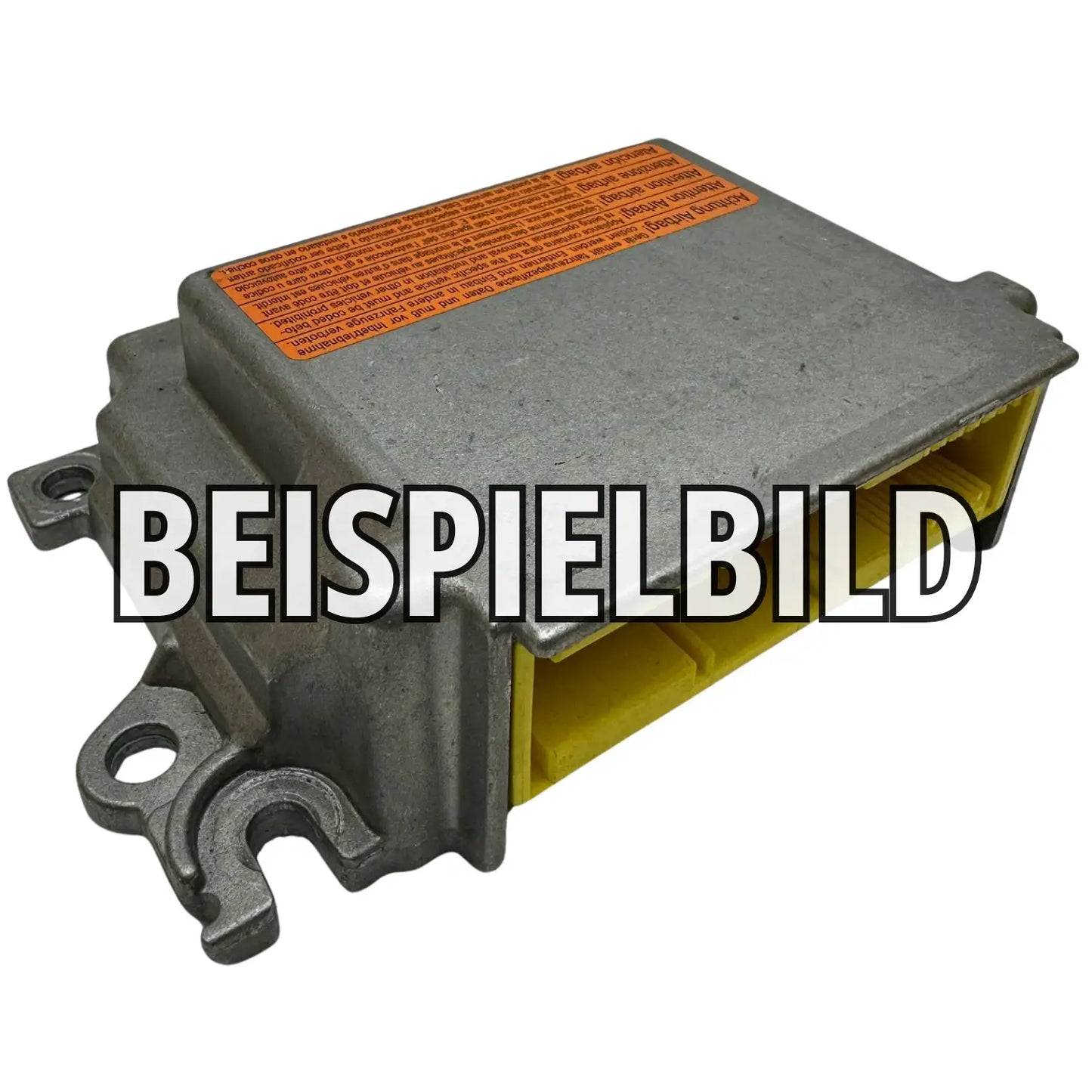What is a Nissan Tiida C13 airbag control unit?
The Nissan Tiida C13 airbag control unit is the central safety unit that activates all occupant restraint systems in the event of an accident. It monitors sensors, stores crash data, and ensures the proper functioning of all airbag modules in the vehicle, essential for safety after an accident or in the event of system failures.
This electronic control unit is specifically designed to monitor and control the complex airbag systems of the Nissan Tiida C13.
It processes signals from collision sensors and acceleration sensors to trigger the targeted deployment of the airbags in milliseconds.
The module communicates with other control units and the diagnostic system via vehicle-specific connectors to ensure smooth operation.
Why is the Nissan Tiida C13 airbag control unit defective?
A Nissan Tiida C13 airbag control unit often malfunctions because it stores crash data after an accident or is compromised by internal electronic errors and moisture damage. In these cases, the airbag warning light will remain permanently illuminated, necessitating repair or replacement of the module for vehicle safety.
Because a vehicle has been involved in an accident, the airbag control unit stores permanent crash data, which requires a reset.
Internal short circuits, age-related wear, or moisture can also lead to failure. In this case, the safety functions are no longer guaranteed.
A defective module can prevent airbags from deploying in an emergency. This poses a significant safety risk that requires immediate Nissan Tiida C13 airbag control unit repair.
Common error codes for Nissan Tiida C13 airbag control unit repair
During Nissan Tiida C13 airbag control unit repairs, specific error codes occur that indicate problems directly with the airbag module. These include B1239 for module failure, B1414 for a reset, and U1010 for CAN bus communication problems, which require precise diagnosis and repair.
- B1239: Airbag Control Module → Airbag control module needs reset or repair → Internal error in the control module or stored crash data.
- B1414: Airbag computer module error → Airbag module send required for reset → Crash data stored or software error.
- U1010: CAN bus communication error → Communication between the airbag control unit and other systems is disrupted → Wiring problems, loose connectors or internal control unit defect.
- B1000: Control unit communication error → General communication problem → Internal error in the module or bus system problem.
- B0091: Control Module Issues → General malfunction of the airbag module → Various internal causes in the control module.
These error codes are crucial for diagnostics to determine whether the airbag control unit is faulty or simply needs a reset. They help identify the exact cause.
A professional diagnosis is essential to take the right measures for the Nissan Tiida C13 airbag control unit repair.
What part numbers are available for the Nissan Tiida C13 airbag control unit repair?
There are no confirmed, exact OEM part numbers for the Nissan Tiida C13 airbag control unit repair. However, similar models use numbers such as 98820-AV200, 98820-AV21A, or 28556-ED000. Verification using the VIN is mandatory to ensure correct compatibility.
Finding an exact OEM part number for the Nissan Tiida C13 airbag control unit is proving complex. Direct confirmation from professional sources is currently unavailable.
Known airbag control unit numbers for similar Nissan Tiida generations or related models include 98820-AV200 and 98820-AV21A. These may provide clues, but must be verified individually.
The number 28556-ED000 is mentioned in the context of airbag module resets for Tiida models. Whether it applies exactly to the C13 requires further verification.
We strongly recommend validating the exact part number via the Vehicle Identification Number (VIN) with a Nissan dealer or through specialized parts catalogs before any Nissan Tiida C13 airbag control unit repair.
This avoids incorrect purchases and ensures that the replacement part or repair fits the specific model.


